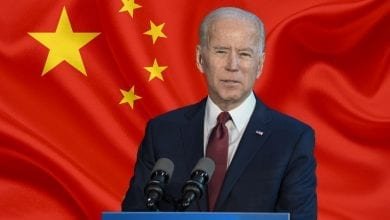Why There Wasn’t a Single New Car on the Lot When I Bought My Car
Over New Year’s, I purchased a car.
It was a wild experience. At the dealership I bought from, there wasn’t a single new car on the lot.
Read that again: not a single new car.
Wait time for a new car exceeded three months, and many of the units in the upcoming shipment were already sold. Used cars weren’t easy to come by, either. For the model I wanted, a Toyota 4Runner, only two vehicles were on the lot – where usually an entire section of the lot is full.
Because of the dearth of new cars, used vehicle prices have skyrocketed. In most states, used car prices shot up 30 percent over the previous January – and more than 40 percent in some states.
The American car shortage stems from a seemingly unlikely source: a microchip shortage in Taiwan, and ultimately the COVID-19 lockdowns. In 2020, manufacturing of microchips in Taiwan was disrupted; because of it, in 2021 and 2022, the price of vehicles exploded.
Modern cars are filled with semiconductor chips – small microchips that manage the electrical systems in a vehicle. They’re used for everything from your remote starter, to your heated steering wheel, to your driver assist. The average new car contains hundreds of these chips.
More than 60 percent of the world’s semiconductors are manufactured in Taiwan.
At the beginning of the COVID-19 pandemic, chip production was scaled back, because people expected car sales to drop in the wake of lockdowns. That drop didn’t happen – and demand for other electronics increased sharply. People stuck at home needed better laptops for remote work and better entertainment systems for their free time, all of which use semiconductor chips.
These unexpected effects of COVID-19 lockdowns changed the semiconductor market.
Semiconductor manufacturers were suddenly stretched thin, and wait times for chips spiked – from 12 weeks in January of 2020 to 15 weeks in January of 2021. Those wait times stalled production of manufacturing companies who placed orders – which in turn slowed down the timeline for getting finished products to market.
The Taiwanese government also placed people under COVID quarantine restrictions. In January 2021 after a COVID outbreak at a hospital, 5,000 Taiwanese citizens who had visited the hospital were placed under mandatory 14-day quarantine, including chip factory employees – and in June of 2021, a COVID outbreak led the Taiwanese government to shut down factory operations and again halt semiconductor production.
This series of events – miscalculating the demand for semiconductor chips, then losing production time due to COVID outbreaks – created a ripple effect that will reverberate in the economy for years.
As Leonard Read explained in I, Pencil, markets are connected in ways far more complex than any one person can understand. A single product is formed from “the configuration of creative human energies—millions of tiny know-hows configurating naturally and spontaneously in response to human necessity and desire and in the absence of any human masterminding!” A single product has numerous antecedents, many of them surprising.
Semiconductors are made primarily from silicon, which is manufactured from quartz crystals. Most of the quartz used in silicon production comes from a single region in Spruce Pine, North Carolina. That mine in turn requires equipment – drills or excavators, ventilation fans, lighting equipment, explosives, and personal gear for each miner. Heavy machinery requires fuel, which means mining production costs increase when the cost of fuel does.
Once the silicon makes it to Taiwan, production requires labor, power, and additional supplies (including phosphorus and boron to turn the silicon into chips). Any disruption to any antecedent affects the entire process.
A power plant outage in Taiwan can affect semiconductor production, as can COVID restrictions. A delay in chip production in Taiwan affects car manufacturing in China, which affects used car prices in America, which affects how much capital consumers have to spend on other products – which in turn influences demand, and on and on.
It’s an intricate web, and disruption to any one piece affects the whole.
Considering the web of inputs is so complex, it is also surprisingly resilient. A shortage of one item may prompt a company to switch to a different supplier, or a different ingredient. Large enough disruptions might warrant retrofitting a factory or revising production methods. These price signals, and the thousands of downstream adjustments made by each player in the supply chain, are built in.
But each disruption – especially large-scale interruptions like a factory shutting down and quarantining – leads to unexpected downstream effects.
When Taiwan’s semiconductor manufacturing faltered, it set off a chain reaction that resulted in barren car lots all over the US. In 2021, Ford’s production numbers were short by 1.25 million vehicles, and Toyota by 1.1 million. The car shortage isn’t going away, either – it may last well into 2023, and maybe even longer.
We may not even yet see all the trailing effects the chip shortage will have. If people are spending more money on cars, what goods won’t they be able to purchase? What opportunity cost will the prohibitive price of a car have on some people’s mobility and employability?
No resource is siloed in a single linear supply “chain.” The entire economy is a vast, interconnected self-organizing supply web: a “latticework” as economist Murray Rothbard called it. When one piece of a complex web is disrupted, reverberations echo down the line in places you wouldn’t expect. That’s why government interventions into the economy have so many consequences that are unintended and unpredictable—and why they should leave it alone.
Content syndicated from Fee.org (FEE) under Creative Commons license.
Agree/Disagree with the author(s)? Let them know in the comments below and be heard by 10’s of thousands of CDN readers each day!



